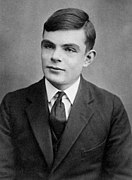Date: 2020/6/10, Wed 14:50
Subject: Number
Hi Number Theorists
I suppose Number Theorists know what number is
Is it Peano's Axiom ? or the definition on ZF Set Theory ?
I give much better one on Free Class Theory
[ Concept ]
I have recognized the structure of PARI is a good example of Free Class Where Free Class is Set Theory that I made
The name is an analog of Free Group Any Set Theory is represented on it
The definition of the function in PARI is described as follows
f(n) = { g(m); h(i); j(k); .... }
The sentence on right side represents how to make the function f(n) So it represents that the sentence makes the function f(n) and also the functions g(m), h(i), j(k), .... are the members of the sentence
I axiomatize it then it becomes the same theory as Free Class
[ The axioms of PARI and Free Class ]
I describe the axioms of the structure of PARI as follows
A. ma ∀X∀Y∀a∀b (X ma a ∧ Y ma b ∧ X=Y) ⇒ a=b
A. el ∀X∀Y (∀b b∈X ⇔ b∈Y) ⇒ X=Y
Where X, Y, Z, .... are the variable for sentence , a, b, c, .... are the variable for function
"ma" is predicate which means "make", "∈" is predicate which means "is a member of"
A. ma represents sentence makes only one function
A. el represents sentence is decided by it's members
Let us consider it as Set Theory If you read these axioms as the description of Set Theory then it becomes the same axioms of Free Class as follows
The function is a kind of Set and Set is a kind of class
The idea which corresponds to the sentence doesn't exist in Set Theory so I use the word "Atsumari" which means somehow like collection in Japanese
It becomes as follows
A. ma ∀X∀Y∀a∀b (X ma a ∧ Y ma b ∧ X=Y) ⇒ a=b
A. el ∀X∀Y (∀b b∈X ⇔ b∈Y) ⇒ X=Y
Where X, Y, Z, .... are the variable for Atsumari , a, b, c, .... are the variable for Class
A. ma represent the Atsumari make only one class
A. el represent the Atsumari is decided it's member
One more axiom A. F is necessary
A.F ∃x∃B (∀a a ∈ B ⇔ F(a)) ∧ B ma x
A. F represents if you collect Classes which have property F then it becomes an Atsumari B and the Atsumari B makes a Class x
[ Explanation ]
The description of the definition of function in PARI looks like the one of the Set in Set Theory
{ g ; h ; j ; k ; .... } g, h, j, k, are function - PARI
{ g , h , j , k , .... } g, h, j, k, are Class - Set Theory
f(n) = { g ; h ; j ; k ; .... } - PARI
It represent the following
The sentence { g ; h ; j ; k ; .... } makes the function f(n)
Let us rewrite it as Set Theory
f = { g , h , j , k , .... } - Set theory
It explains in the same way how to make the class f It means the following
The "Atsumari" { g , h , j , k , .... } makes the class f
For example :
Fruit = { Peach, Kiwi, Orange, Banana, Strawberry, .... }
The parenthesis on right side is a collection It is neither Class nor Set yet and it makes the Class Fruit
Notice that two different sentences make the same function So in the same way two different Atsumari make the same class
Some people think that Strawberry is vegetable so the Atsumari which doesn't have Strawberry might make the class Fruit
Notice also that sentence in sentence like { g ; h ; i ; { x ; y ; .... } ; .... } is grammatically incorrect in PARI So Atsumari in Atsumari like { g , h , i , { x , y , .... } , .... } is impossible in Free Class The member of Atsumari is only Class
The translation between Set Theory to Free Class is the following
For exampl :
Orange ∈ Fruit is translated to ∃ B Orange ∈ B ∧ B ma Fruit
In general
x ∈ y in ZF ∃ B x ∈ B ∧ B ma y in FC where FC is the abbreviation of Free Class
[ Russel's class ]
∀a a∈R ⇔ ¬(∃B a∈B ∧ B ma a)
The right side of formula means ¬(a∈a) in ZF.
This Atsumari R makes Russel's Class r, so R ma r.
Let a=r then,
r∈R ⇔ ¬(∃B r∈B ∧ B ma r)
If r∈R is true, considering that R ma r is also true,then
∃B r∈B ∧ B ma r is true, then right side of formula is false. This is a contradiction.
So, the following formulas are gotten.
¬(r∈R), ∃B r∈B ∧ B ma r.
[ Idea “Set “ ]
I use the word "Set" for representing a scale of a Class.
The definition of Set is the following.
Set x Df. ¬(∃B x∈B ∧ B ma x)
comment : I think that it might be better to describe "little" or "Normal" or "NSM" for non-self-membership.
All of the classes in FC have memberhood, so "set" is useless. I recycled it
Then Russel's Class is written as follows.
∀a a∈R ⇔ Set a
And results are,
¬(r∈R), ¬Set r
[M5]
M5 is defined as follows:
U={0,1,2,3, n}
{ } ma 0, {0} ma 1, {0,1} ma 2, {0,1,2} ma 3, {0,1,2,3} ma n, {0,1,2,3,n} ma n,
for all other Atsumari X, X ma n
We are able to verify the result of section [ Russel's Class ] on M5.
On M5, classes 0, 1, 2, 3 are Set.
So, R={0,1,2,3}
and r=n , because {0,1,2,3} ma n
The two formulas of a conclusion of the section are ¬(r∈R), ∃B r∈B ∧ B ma r.
Both are true, because ¬(n∈{0,1,2,3}) and n∈{0,1,2,3,n} ∧ {0,1,2,3,n} ma n
M5 satisfies almost all of ZF, except the axiom of foundation.
Any model of FC satisfies all axioms of ZF except the axiom of foundation.
Because A.F. of FC says any class exists.
This axiom also allows a class x such that ∃B x∈B ∧ B ma x which means x∈x in ZF.
[ The existence of 1-1 function between X and the power Atsumari of X ]
member of X 1-1f ⇒ member of P(X)
a corresponds f(a)
P(X)={b : a sub-Atsumari of X makes b} , or precisely it is defined as follows :
∀a a∈P(X) ⇔ ∃M M ma a ∧ M ⊆ X
where,
M ⊆ X means M is a sub Atsumari of X.
M ⊆ X Df. ∀a (a∈M ⇒ a∈X)
If an 1-1 function f exists between an Atsumari X and the P(X) then,
Let us consider an Atsumari B such that :
∀a a∈B ⇔ ¬ (∃C a∈C ∧ C ma f(a)) ∧ a∈X (B)
and this Atsumari B makes a class b, so B ma b (1)
B⊆X , b∈P(X) , so
∃b' f(b')=b ∧ b'∈X
let a=b' in formula (B)
b'∈B ⇔ ¬ (∃C b'∈C ∧ C ma b) ∧ b'∈X
if b'∈B is true, then considering (1), right side of formula is false.
it is contradiction. So,
¬ b'∈B , ∃C b'∈C ∧ C ma b
this conclusion is not a contradiction, it means 1-1 function f may exist.
ex. Indeed, in M5, if X=U then P(X)=U, naturally, 1-1f between U and U exists.
[ The definition of Ordinal Number ]
Ordinal class is defined as follows :
Ord x Df. ∃ B Ord B ∧ B ma x
and Ordinal Atsumari is defined as follows :
Ord A Df. Com A ∧ Con A ∧ Reg A
Com A Df. ∀x x∈A ⇒ ∃!B B<A ∧ B ma x
Con A Df. ∀x∀y x∈A ∧ y∈A ⇒ x<y | A V y<x | A V x=y
Reg A Df. ∀B (∃b b∈B) ∧ B<A ⇒ ∃a a∈B ∧ (∀b b<a|A ⇒ ¬b∈B)
x<y | A Df. ∃B (x∈B ∧ B ma y) ∧ B<A
B<A Df. (∀a (a∈B ⇒ a∈A)) ∧ ¬(A=B)
a comment : Com, Con, Reg are abbreviations of complete, connected, regularity.
Com corresponds transitive and Con + Reg corresponds well-ordering.
B<A means B is a proper sub-Atsumari of A.
Notice on M5 Fermat's Theorem is incorrect
2^3 + 3^3 = 3^3 = n
Yasutoshi
|
|
|
|
|
|
|
|
「自由クラス理論」非標準集合論 更新情報
-
最新のイベント
-
まだ何もありません
-
-
最新のアンケート
-
まだ何もありません
-
「自由クラス理論」非標準集合論のメンバーはこんなコミュニティにも参加しています
人気コミュニティランキング
- 1位
- 楽天イーグルス
- 31947人
- 2位
- 千葉 ロッテマリーンズ
- 37151人
- 3位
- 一行で笑わせろ!
- 82526人






